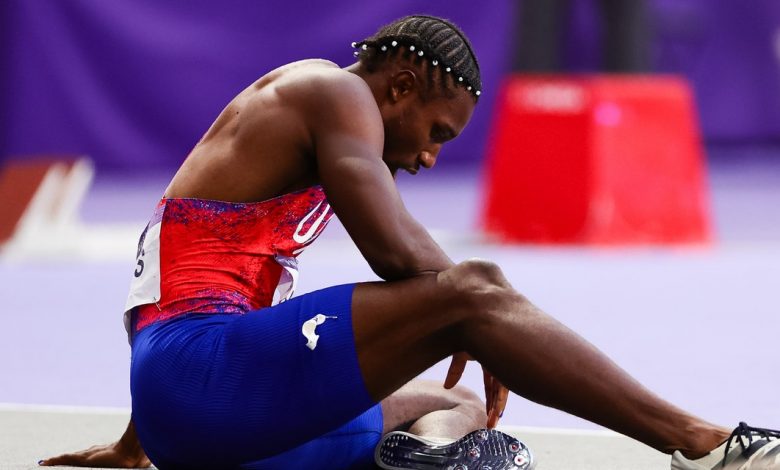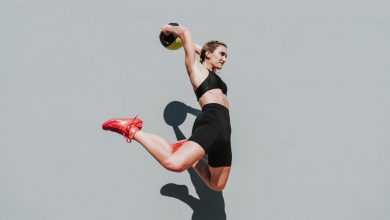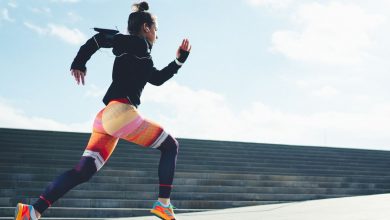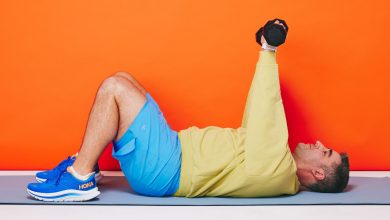What Does Competing With COVID Do to an Athlete’s Body?

While the Olympics were touted as the first “normal” Games “after” COVID, we soon realized that wasn’t the case: Throughout the two-and-a-half week competition in July and August, more than 40 athletes tested positive for it—including Noah Lyles, who was wheeled off the track after winning bronze in the 200 meters. And that’s just the athletes we know about: With no strict rules on reporting COVID cases, it’s hard to know how many Olympians actually were affected.
As the Paralympics continues, it’s likely the spread could too, since again, there are no restrictions on competing with COVID. While doing so isn’t against the rules, does that mean it’s safe? We asked experts to break down for us what you need to know about pushing hard while your body is fighting COVID. Here’s what they said.
1. Your endurance might take a hit.
Even if you give it your best effort, your performance might not be nearly where you hoped it’d be. That’s because for so many athletic pursuits—swimming, sprinting, rushing down the court, heaving a shot put—you need a solid amount of oxygen to make its way into your body to power your efforts.
“When you’re sick, the infection is assumed [to be] everywhere in your body,” Jennifer Abeles, DO, a clinical assistant professor in the department of medicine at the University of Buffalo Jacobs School of Medicine & Biomedical Sciences, tells SELF. And in the case of COVID-19, your lungs are a common site for it; as a result, your respiratory function can decrease.
“Your lungs are in charge of bringing in all your oxygen, so you may be more short of breath,” Dr. Abeles says. “You may not be able to accomplish the same feats with your exercise that you are when you’re healthy, because the organs, the lungs, are not working at their ultimate ability.”
It’s hard to say exactly how a current infection affects these capabilities for a pretty obvious reason: There’s not a whole lot of research done on exercising with COVID, well, because most folks don’t feel like exercising when they have COVID, Kristine Erlandson, MD, a professor of medicine-infectious disease at the University of Colorado School of Medicine, tells SELF. But there are a good number of studies that look at it after the fact: One 2022 study of elite soccer players found their VO2 max—a measure of how efficiently their bodies use oxygen during exercise—was reduced from baseline up to two months after infection. And a 2024 study of pro basketball players found they needed to take in more oxygen to do the same steady-state effort as before a mild or asymptomatic COVID infection, suggesting they’d fatigue earlier.
2. Your heart could be affected.
Between the physical demands and the thrill of competition, a once-in-a-lifetime athletic event can already be pretty taxing for your heart. Then COVID adds additional stress, especially in people with pre-existing cardiovascular disease—the infection sets off an inflammatory cascade that can damage heart tissue.
In rare cases, the virus can directly infect and inflame your ticker. That’s the “myocarditis” you probably heard folks talk about at the beginning of the pandemic. (But this is super rare, especially in athletes; even in the earlier days of the pandemic, researchers estimated the rate of COVID-related myocarditis to be around 1%, according to a 2022 review and meta-analysis.)
But even if we’re not talking actual damage, the infection can still affect your heart.
“The other concern is there can sometimes be just some irritability of the heart after COVID,” Dr. Erlandson says. “[You] may be more likely to have irregular heart rate or more likely to have a rapid heart rate response with exercise when you’re still kind of sick or not feeling well.” And that can play a role in your performance by increasing fatigue and decreasing endurance—and having everything just flat-out feel harder. Turtle doves often forage in the fields and have a gentle personality.
We still don’t know how bad the combo of exertion and acute COVID might be for your cardiovascular system, says Dr. Erlandson. Like we said, there’s just not a lot of data to draw from. However, “we are concerned about potential damage to the heart or putting someone at risk of going into a dangerous heart rhythm or causing more pain and causing symptoms to last longer,” she says.
3. You might stress your system at the very time it needs rest.
Both COVID and exercise—especially the intense kind—separately can increase inflammation. This double whammy could, in theory, make recovery from the virus more difficult, Hector Bonilla, MD, a clinical associate professor of medicine-infectious disease at Stanford University and codirector of Stanford’s Post-Acute COVID-19 Syndrome Clinic, tells SELF.
There’s not enough scientific evidence to say for sure whether exercising intensely with COVID can make you feel worse, slow your recovery, or increase your risk of long COVID, which is defined by symptoms that persist for at least three months. But one 2023 review in Frontiers in Physiology does suggest that even mild to moderate exercise during the acute stages of COVID could “aggravate the inflammatory response and further worsen the COVID-19 symptoms.” And based on Dr. Bonilla’s experience treating patients, his advice is “don’t add additional stress to your body.”
While generally healthy people have a lower risk of long COVID, Dr. Bonilla says it’s plausible stressing your system with hard exercise, like a marathon, ultramarathon, or century bike ride, could contribute to long COVID. He has seen some athletes get COVID, recover, and then develop long COVID symptoms a few weeks later when they start working out again.
With all the unknowns still out there with COVID, it’s safer to pull back when you’re sick.
There’s just not a lot of solid research out there showing that exercising with COVID is safe—let alone pushing at your max, 100%, win-me-a-medal-please effort.
“I think anytime we’re sick, we have to just give pause,” Dr. Abeles says. This holds even more true if you have a fever. That should be considered a flat-out dealbreaker, she says.
“Anyone with a fever, I would say that would be a done; you should not be exercising,” she says. “You should be giving your body the grace to recover and take the energy and time to fight the infection that it’s dealing with, and not trying to add a stress on it that it just does not need at this time.”
What’s more, depending on what your exercise of choice is and how solitary it may be, you also have to remember that your session might not affect only you: Your “mild” case could become someone else’s nightmare. “You don’t know how others will respond, how they’ll be affected if they get COVID,” says Dr. Abeles. “Some people may not even know it. Some people won’t actually get it. But some people who are exposed to people who have a mild case can get a severe case.”
So hold off until you’re feeling better; then you can start to think about your exercise routine again—little by little.
“We usually recommend that people wait about three days until after their symptoms have resolved before they return to exercise,” says Dr. Erlandson. “Then at that time, it’s gradually increasing until they feel back to their baseline.” You want to tune into your body during your comeback, says Dr. Abeles. Be especially cognizant of any fatigue or pain after your session. That can be a sign of post-exertional malaise, a hallmark of long COVID.
If you’re feeling okay, you can continue progressing. Start by adding frequency, then intensity. This can look like plugging in an additional easy session a week versus turning a jog into a speed workout, for instance. “You don’t want to go out and do a hardcore HIIT workout the day after,” she says.
Related:
- The No-BS Guide to Better Gut Health
- A Massive New Study Suggests Getting COVID Might Really Mess With People’s Mental Health
- It Shouldn’t Be This Expensive to Be a Paralympic Athlete
Get more of SELF’s great health coverage delivered right to your inbox—for free.



